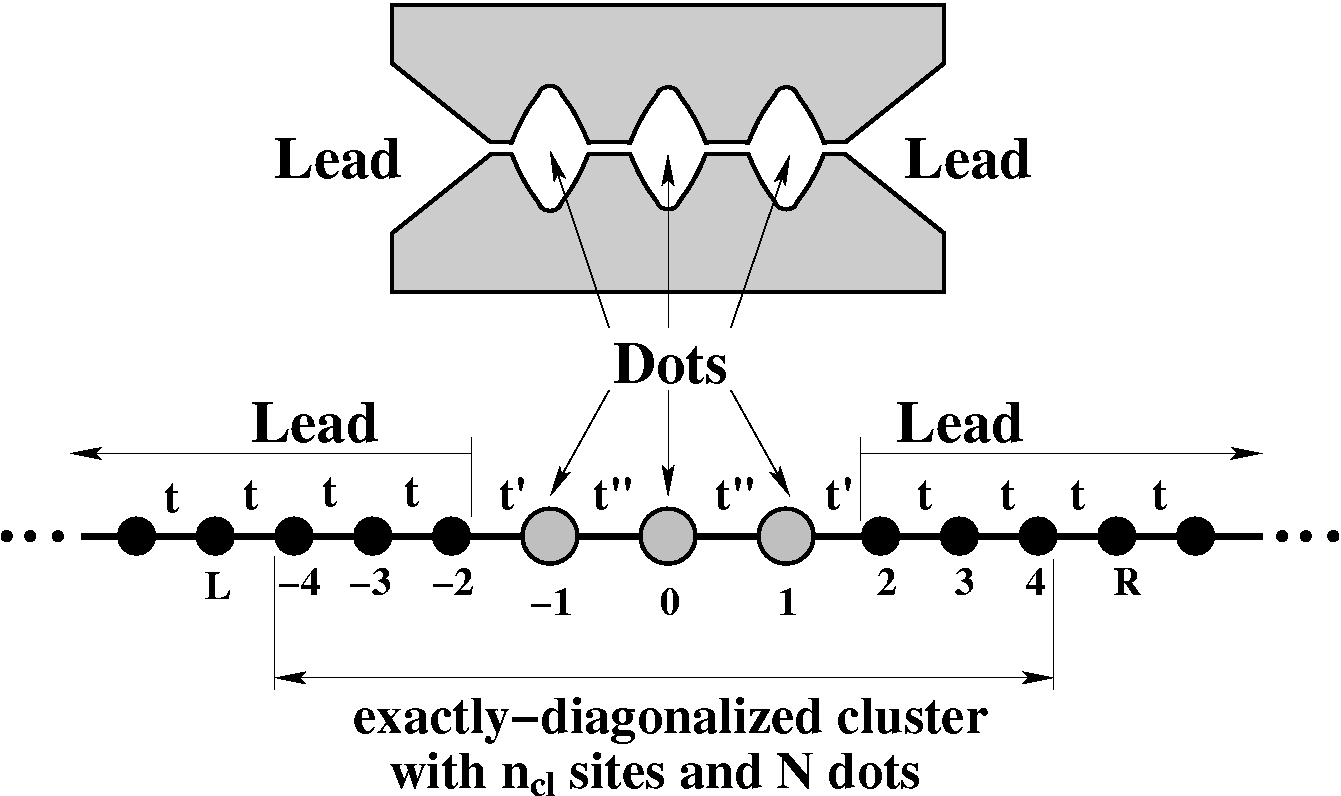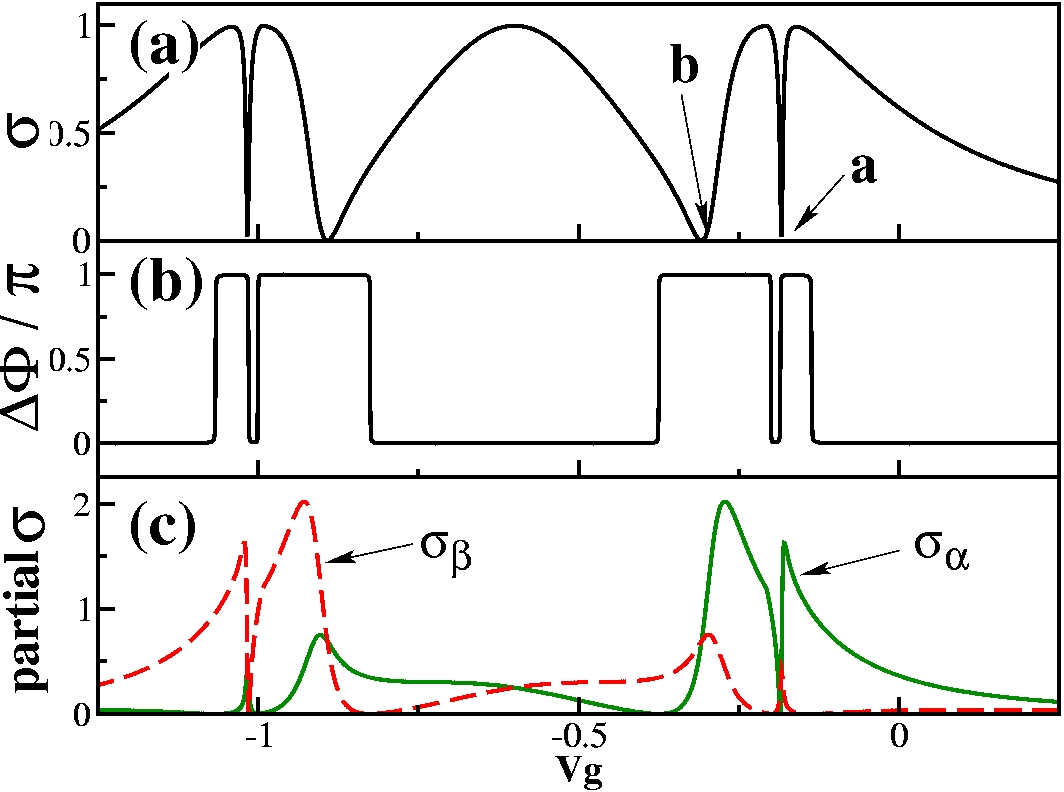In addition to their numerous potential technological applications, Nanostructures and nanodevices are also very interesting at the fundamental research level. From the technological point of view, quantum dots are strong candidates to be used in quantum computing and spintronics. In particular, two coupled quantum dots have been proposed to represent tunable qubit circuits, where the spin interaction between the electrons in the dots defines the two states of the qubit. Moreover, molecular conductors are the essential ingredients of the future molecular electronics, in which transistors, switches and all other functioning units are basically single molecules. From the fundamental science point of view, these systems can be used as the test ground for the influence of many body interactions, with the major advantage that their parameters can be tuned easily and continuously. We study numerically the electron transport across quantum dots and molecular conductors. We use a fully quantum mechanical technique, consisting of solving exactly for the central interacting region (molecule or QD) and then connecting this region to the metallic leads using Dyson equation. A description of the numerical technique we use is available in this brief document. We recently studied the effect of having more than one active energy level in single and double quantum dots. The results show interesting interference effects, and in the case of two dots, a novel ferromagnetic phase emerges. Currently, we are studying the effect of RKKY interaction and molecular and lattice vibrations on nanoscopic transport. Below is a list of our publications on the subject.
Publications
'Prediction of Ferromagnetic Correlations in Coupled Double-Level Quantum Dots', G.B. Martins, C.A. Busser, K.A. Al-Hassanieh, A. Moreo, and E. Dagotto, Phys. Rev. Lett. 94, 026804 (2005). cond-mat/0407109 .
 |
A schematic of
the system studied in Phys. Rev. B 70, 035402 (2004). This
figure also schematizes the numerical method used to study the electron
transport in nanostructures. Where a cluster consisting of the
central interacting region and a few sites of the leads is solved
exactly and then embedded in the rest of the leads using Dyson's
equation. |
 |
This figure summarizes the results of our work on multilevel quantum dots, Phys. Rev. B 70, 245303 (2004). (a) Shows the overall conductance of the two level quantum dot, (b) shows the difference between the phases carried by the two channels corresponding to the two energy levels, and (c) shows the conductance of the individual channels. The peaks (dips) in the overall conductance correspond to the constructive (destructive) interference between the two channels. |